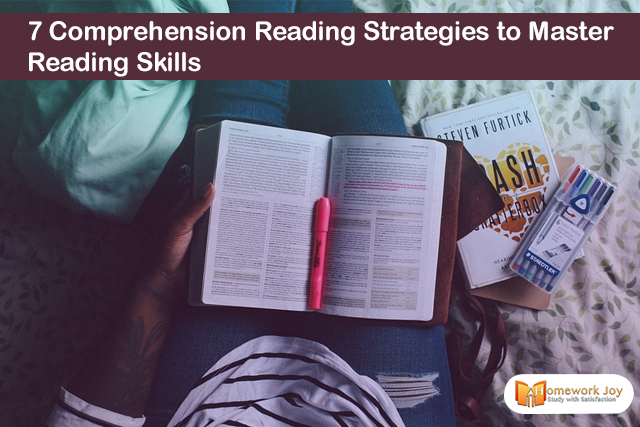Comprehension reading strategies are the set of plans that good readers use. These strategies are also instructions that help students to become purposeful, active readers. Though, these active readers are in control of their reading comprehension. Thus, these strategies have research-based evidence for improving text comprehension.
Most of the time, teachers say that they don’t understand what they are reading. But, students complain that books are hard to read. These situations highlight a problem in reading comprehension. But such difficulties of reading comprehension are not limited to low-level readers. Not only the low-level readers but also some good readers have issues while reading. Thus, comprehension reading strategies are not only for low-level readers. But for all readers. Hence, we will discuss these strategies here to boost comprehension reading skills.
But first, there is a need to know what comprehension reading is.
What is Comprehension Reading?
Comprehension reading is the ability to process the text and understand its meaning. Good comprehension reading strategies must include the ability to understand the text. It is also the ability to draw inferences from passages.
In simple words, comprehension reading is the act of understanding what you are reading. Yet, the act is not that simple to teach, learn, or practice. It is also known as an interactive, intentional, or active process. This process occurs before, during, and after a person reads a particular piece of text. As when a person reads a book, he is also using his awareness and understanding of phonemes and phonics.
People learn comprehension reading skills through education and instruction. Yet, some people learn it through direct experiences. Since the proficient comprehension reading depends on the ability to recognize words.
7 Key Comprehension Reading Strategies
Here are seven useful tips and strategies to increase your comprehension of reading skills. These are helpful for all the students. The following mentioned are some comprehension reading strategies.
Generate Questions
Instead of rushing through a passage or chapter, pause and generate questions. These questions can be about what might happen in the future or what has happened.
Framing questions can help readers to focus on the main ideas. This strategy can also increase the student’s engagement with the material. To write questions, students must look at the information differently. Through this method, students can also help teachers to correct misconceptions.
Read Aloud and Track
Some scholars believe that reading aloud is helpful in secondary classrooms as an elementary practice. But guess what, it is also beneficial for middle and high school students as well. By reading aloud, you can model good reading behavior.
Reading aloud also includes stops to check to understand. A good comprehension reading strategy focuses on the meaning within the text, about the text, and beyond the text. It is an interactive element that pushes students for deeper thought.
Promotes Cooperative Talking
When students read with focus, then they can discuss their issues about the understanding of the text. Listening to students can help teachers to reinforce what they have to teach. This strategy is very useful, but it can only use after the aloud strategy. Thus all the students will have shared experience in listening to a text. It is a kind of cooperative learning where students can learn reading strategies.
Monitoring Comprehension
Students who are good at comprehension reading know when they understand the meaning of something and when they do not since they have strategies to fix their problem when the problem arises.
Research shows that instructions can help students to become better at their comprehension. Comprehension track teaches students to identify what they do not understand. Students should use appropriate strategies to resolve the problems in comprehension reading.
Take Notes
While reading comprehension, students should have a pen and paper in hand. So that they can take notes of things that they understand. They can also write down questions, as mentioned above. Taking notes can also help make a vocabulary list of all the words that are unfamiliar to them.
Besides this, they can later discuss the highlighted points in class. Using sticky notes allow students to record important information without damaging the original text.
Use Graphic Organizers
Graphic organizers illustrate the concept between author and reader. They use diagrams, maps, graphs, webs, or charts. It can help students to differentiate between fictional and non-fictional text structure. Besides this, students can also learn to write well-organized summaries of text by using graphic organizers. The perfect example of a graphic organizer is Venn-diagram, which helps to contrast information from two sources.
Answering Questions
Questions are useful since they give students a purpose for reading. The question-answer strategy helps students to learn how to respond better. This strategy also allows students to focus on what they are learning. By answering questions, students can check their comprehension. It also encourages students to review their content and relate what they learned to what they already know.
Thus, these were some comprehension reading strategies that can do through cooperative learning. It also encourages students to work together as partners on defined tasks.
